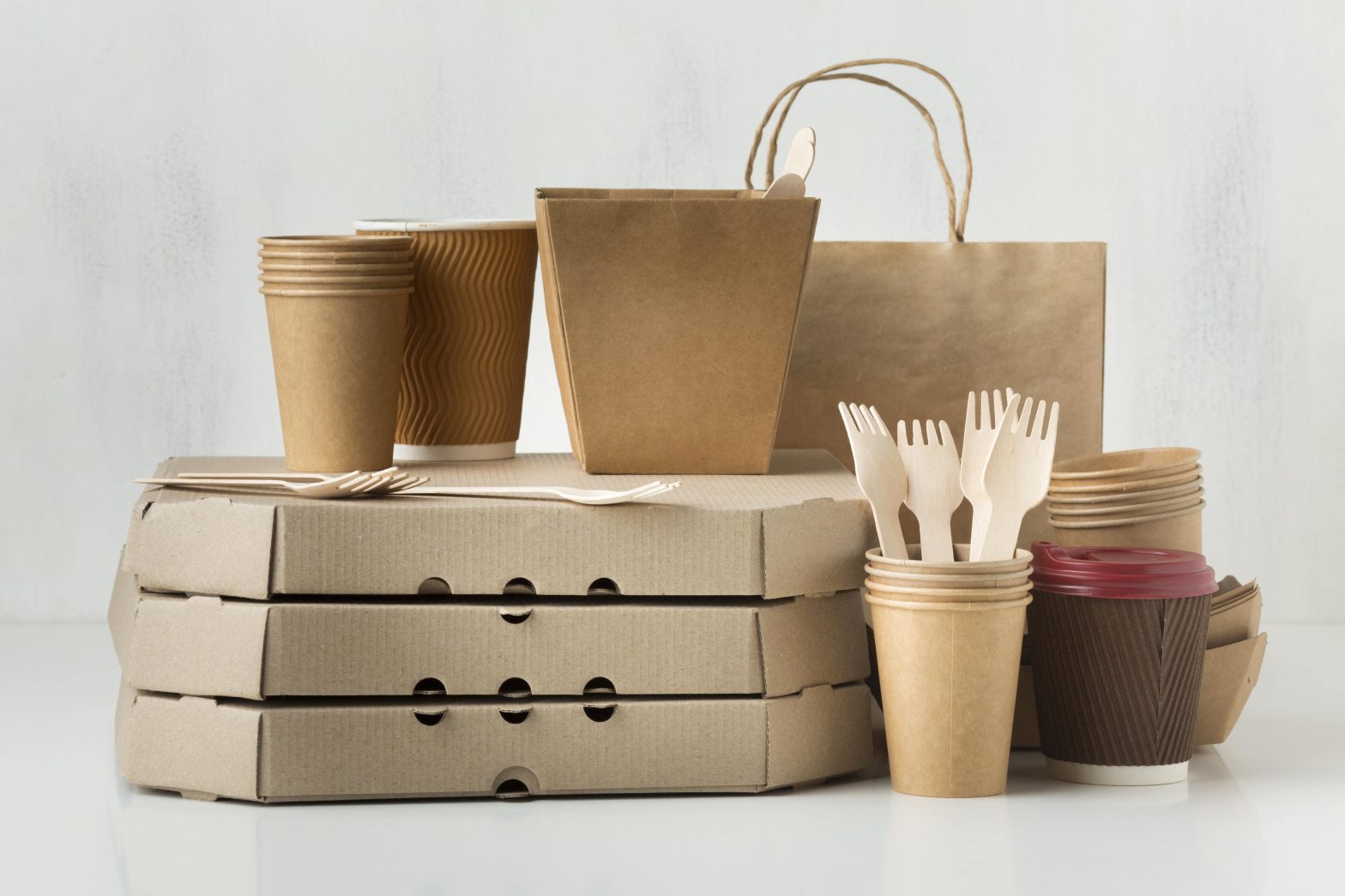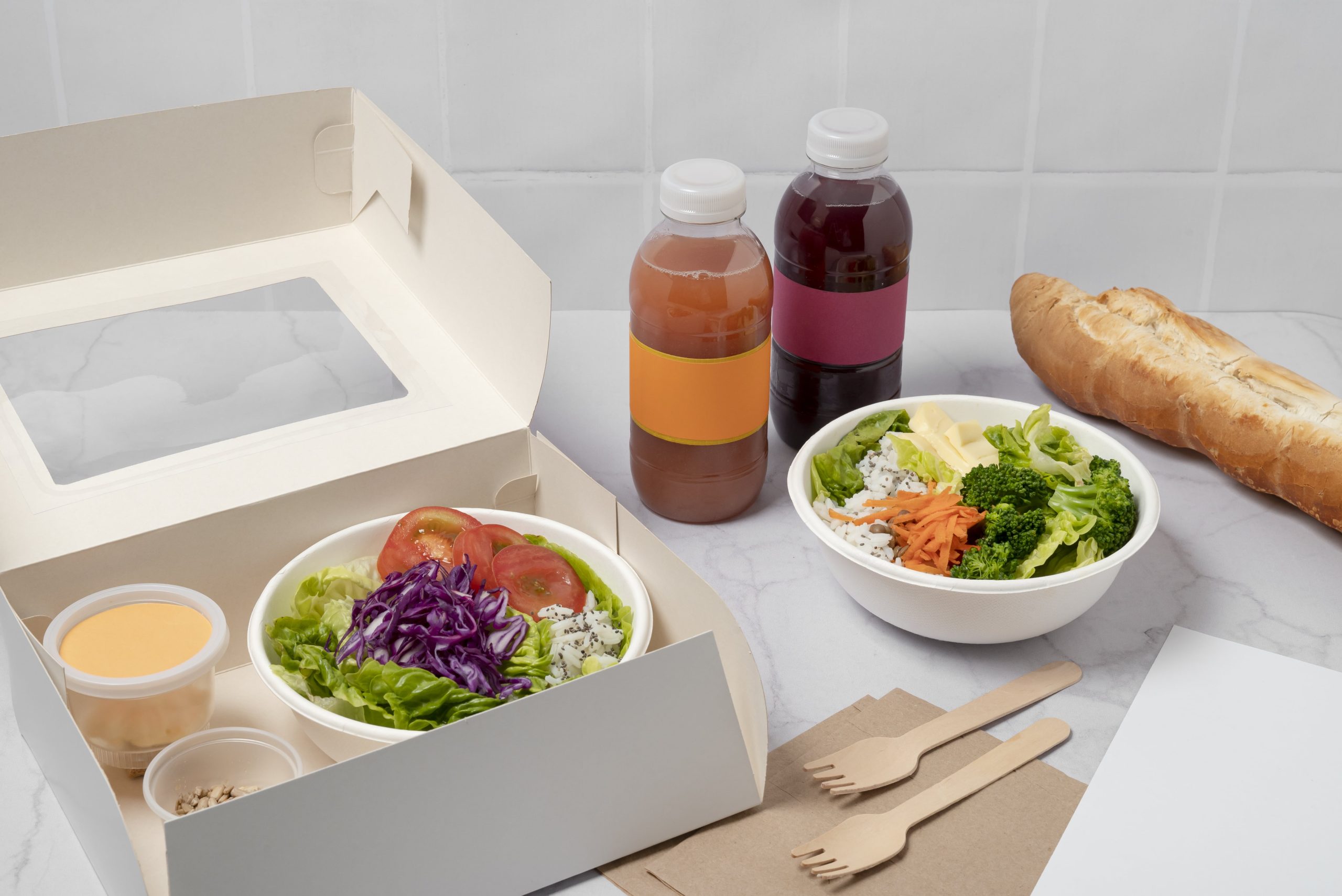Types of Eco-Friendly Food Packaging
Eco-friendly packaging is becoming a growing trend, and businesses are beginning to recognize its benefits. By choosing eco-friendly packaging materials for packaging purposes, companies can reduce their carbon footprint while improving brand credibility. Sustainability is increasingly valued among many consumers; thus, brands must remain current with trends to remain relevant to target audiences.
This trend of sustainability can particularly be found in the new generation of millennials and Gen Z, who now prefer everything to be eco-friendly and sustainable. Utilizing eco-friendly shipping methods reduces carbon emissions while decreasing waste production levels. It’s important to consider biodegradable materials for packaging for small businesses and large enterprises alike if they want to stay in the competition and lead towards future success.
Eco-friendly packaging materials appeal to environmentally aware consumers, using plant-based fibers and reusable materials that make this option suitable for food containers, trays, and plates. These products can be reused multiple times and do not contain harmful toxins – an impressive step away from plastic waste, which adversely impacts our environment and health.
What Is Eco-Friendly Packaging?
In general, eco-friendly packaging refers to any form of packaging made of natural or recycled materials that don’t harm the environment in any way, including using less non-sustainable petrochemical resources from oil and gas extraction processes and moving towards green sustainable packaging. Furthermore, biodegradable and compostable materials like green coffee bags, seaweed packaging, or biodegradable plastic packaging solutions help to lessen its overall impact.
Eco-friendly materials also use less raw materials during production than conventional packaging forms, meaning less harmful effects are caused. Biodegradable paper bags and cardboard boxes are excellent examples of eco-friendly packaging solutions, providing food storage and product packaging services. Eco-friendly materials also have lower shipping and overhead costs while being more durable than plastic, another widely used packaging material.
Eco-friendly packaging for small businesses and other such sustainable packaging options will enable you to save huge amounts of shipping expenses and help you boost your overall ROI.
Types of Eco-Friendly and Biodegradable Materials for Packaging: 1. Recycled Cardboard and Paper Packaging
1. Recycled Cardboard and Paper Packaging
Cardboard and paper packaging materials are great packaging alternatives because they are constructed from renewable raw materials that require minimal energy for recycling into new paper products. Before going into your recycling bin, recycled cardboard and paper must be free of grease, chemicals, and paint. Recycled papers are beneficial to the environment. They lack hazardous compounds that are abundantly found in plastic, and their use minimizes greenhouse gas emissions.
2. Biodegradable Plastics and Recycled Plastics
Every minute, a truck dumps hazardous and non-degradable waste into the ocean. This has made many consumers opt for biodegradable and compostable products as a solution to plastic pollution. But not all “green options” are equal. Bioplastics may bear a “bio” prefix. Still, many are made from fossil fuel-derived ingredients and, as with traditional plastic, will eventually break down into harmful microplastics that threaten marine environments.
This is why it is important to know the real source of the bioplastics and check if they really are biodegradable plastics or not! Bioplastics made from renewable plant materials or sugars found in corn starch, cassava root, or sugarcane can be conveniently used to replace plastics for packaging. Biodegradable materials could eventually replace plastic as an everyday material, but for that to happen, they must compete with traditional plastics in the marketplace and meet stringent environmental standards.
3. Organic Ecological Textile
As consumers become more eco-conscious, organic textiles have gained widespread interest. Many consumers prefer organic cotton grown without synthetic chemicals and certified by the Global Organic Textile Standards (GOTS). Furthermore, organic materials are biodegradable recyclable, and contribute to a sustainable future. Shoppers strive for such packaging solutions when selecting environmentally friendly products.
Cellulose food packaging is biodegradable and an eco-friendly food choice that may be reused numerous times before ending up in landfills. Showing that you care about sustainability will set your business apart and attract environmentally conscious customers while increasing sales – although remember, it’s best to opt for reusable items whenever possible! When selecting eco-friendly food packaging solutions, it is key that they be reused multiple times; this will reduce waste materials ending up there and minimize landfill usage.
4. Seaweed Packaging
Seaweed packaging offers an eco-friendly alternative to plastic waste, being one of the best biodegradable materials for packaging, all while not contributing to global climate change. PHA or Polyhydroxyalkanoate is produced through microorganisms that have been genetically engineered. Once PHA production begins, it can be harvested, melted down, and formed into desired shapes for harvesting or molding purposes.
There are several socially responsible businesses that use this innovative, sustainable packaging made with seaweed for packaging their goods. This packaging is eco-friendly and can be used as food when exposed to water, making it edible for fish and other water creatures while supporting coastal communities with their livelihoods. If you are looking for the right eco-friendly packaging for small businesses but are unsure which one to use, it’s advisable to contact a leading sustainable packaging manufacturer now!
5. Corn Starch Packaging
Corn starch packaging is an effective way for businesses to show their customers they care for the environment. By choosing corn starch as an eco-friendly material, they help decrease plastic pollution in our oceans while offering their customers a biodegradable and compostable alternative to traditional plastics – not to mention its ease of use for multiple applications!
You could even imprint your company logo onto it to increase customer loyalty! Corn starch plastics are carbon-neutral materials made of fermented plant sugars and starch, similar to synthetic polymers. Corn starch plastics offer an environmentally friendly solution as an alternative to disposable products containing toxic chemicals, making them suitable for those who suffer from allergies and sensitivities.
As plastic bans increase, especially for coffee and other food products, more businesses are opting for eco-friendly packaging options such as corn starch packaging or green coffee bags.
Why is Sustainable Food Packaging Important?
Each year, billions of pounds of food are wasted due to the short shelf life of many fresh foods. To minimize wasteful wastage and protect their products from spoilage and contamination, businesses must select appropriate alternatives to plastic packaging that help their products last longer and minimize environmental impacts during production and transport. Sustainable packaging also plays an integral part in this equation – its environmental benefits cannot be overstated!
Beyond the financial costs associated with producing and distributing conventionally grown and packaged food products, our global food system also has substantial environmental damage across sectors and regions. While selecting green, sustainable packaging material is one way to make an impactful statement about sustainability, other steps include reducing overall packaging volumes by purchasing locally and minimizing transportation distances across borders.
Traditional packaging materials for food items encase the items in multiple layers; most supermarkets display products on plastic trays, wrapped in paper, and placed inside cardboard boxes – an excess of packaging which both reduces the cost to retailers while being detrimental to the environment as the materials used cannot all be recycled and generate additional waste when consumers take home their groceries. To deal with this, it’s vital that we choose biodegradable materials for packaging.
Utilizing eco-friendly packaging materials will not only lower your carbon footprint but will also demonstrate to customers and employees alike your organization’s dedication to environmental causes. This may attract new customers as well as talented workers looking for organizations that show commitment to the planet. When making the switch to eco-friendly packaging, it is imperative that you source materials from reliable suppliers and eco-friendly packaging material manufacturers.
Conclusion
Start small when it comes to adopting eco-friendly shipping practices: make gradual modifications to existing processes. It can be tempting to go overboard in your efforts towards being more environmentally responsible, so take things slowly and measure results – this way, you won’t overwhelm yourself or your team while potentially doing more damage than good.
Many brands and businesses are found guilty of overpackaging their products, generating massive amounts of waste through materials such as unnecessary foam fillers. Companies can reduce this waste by opting for eco-friendly packaging alternatives while still guaranteeing their product arrives safely and securely.
Always remember that the earlier you adopt green sustainable packaging, the more good you’ll do for the environment and, thus, for future generations. Happy Green and Sustainable Living!



 1. Recycled Cardboard and Paper Packaging
1. Recycled Cardboard and Paper Packaging










